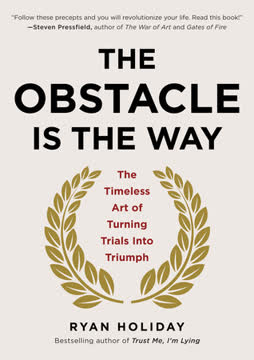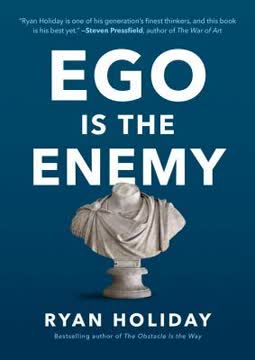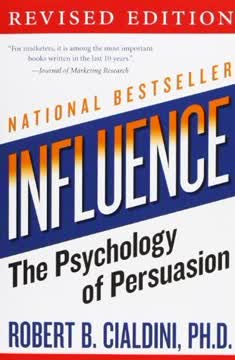Key Takeaways
1. Master the Three Core Tensions of Negotiation.
The problem-solving negotiator cannot make these disappear, no matter how skilled she may be.
Negotiation is complex. Every negotiation, whether a simple deal or a complex dispute, involves inherent tensions that cannot be eliminated but must be managed. These tensions are present from beginning to end and require conscious effort to navigate effectively. Ignoring them leads to suboptimal outcomes.
Three fundamental tensions:
- Creating vs. Distributing Value: Expanding the pie versus claiming a slice.
- Empathy vs. Assertiveness: Understanding the other side versus advocating your own.
- Principals vs. Agents: Aligning the interests of those represented with those representing.
Managing is key. Skilled negotiators don't try to resolve these tensions entirely but learn to move nimbly between the competing demands each tension presents. This requires flexibility, self-awareness, and a willingness to adapt one's approach based on the specific context and the behavior of others involved.
2. Create Value by Trading on Differences and Reducing Costs.
But the truth is that differences are often more useful than similarities in helping parties reach a deal.
Value comes from differences. While common ground is necessary for agreement, the real opportunities for creating value lie in exploiting differences between parties. These differences allow for mutually beneficial trades that expand the pie before it's divided.
Sources of value creation:
- Different Resources: Trading what one has in abundance for what the other needs (e.g., Jim's storage space for Sara's furniture).
- Different Relative Valuations: Parties valuing the same items differently.
- Different Forecasts: Betting on different predictions about the future (e.g., contingent bonuses).
- Different Risk Preferences: Allocating risk to the party more willing or able to bear it (e.g., insurance, warranties).
- Different Time Preferences: Valuing timing differently (e.g., payment schedules).
- Economies of Scale/Scope: Sharing costs or leveraging existing resources.
Reduce transaction costs. Value is also created by making the negotiation process itself more efficient. Minimizing time, money, and emotional costs, and dampening strategic opportunism (like deception), leaves more value for both parties to share.
3. Balance Empathy and Assertiveness for Effective Communication.
In our experience, the most effective negotiators try, like Martin, to both empathize and assert in their interactions with others.
Two critical skills. Effective negotiation requires mastering two seemingly opposite interpersonal skills: empathy and assertiveness. Empathy means demonstrating an accurate, nonjudgmental understanding of the other side's perspective, while assertiveness means clearly expressing and advocating your own needs and interests.
Why both are essential:
- Empathy helps you understand the other side's interests, uncover hidden information, correct misperceptions, build trust, and make your own arguments more persuasive (two-sided messages).
- Assertiveness ensures your own interests are heard, prevents exploitation, facilitates healthy working relationships, and promotes self-respect.
Avoid common pitfalls. People often default to one of three suboptimal modes when faced with conflict: competing (high assertion, low empathy), accommodating (high empathy, low assertion), or avoiding (low empathy, low empathy). None of these modes consistently leads to optimal outcomes.
Develop flexibility. The goal is to view empathy and assertiveness as independent dimensions, not a spectrum where you must choose one over the other. Skilled negotiators can exhibit high levels of both, adapting their communication style as needed to build understanding while advocating effectively.
4. Manage the Principal-Agent Tension Explicitly.
But in the real world, agents always have interests of their own.
Agency is pervasive. We constantly delegate tasks to agents (lawyers, realtors, employees) who act on our behalf. While agents offer significant benefits (knowledge, resources, skills, strategic advantages), their own interests are rarely perfectly aligned with their principals'.
Sources of agency costs:
- Different Preferences: Agents prioritize their own careers, reputations, and income alongside the principal's goals.
- Different Incentives: Fee structures (contingency, hourly, fixed) can create perverse incentives (e.g., settling early vs. maximizing recovery, prolonging work vs. efficiency).
- Different Information: Agents may have information the principal lacks and may strategically withhold it.
Management mechanisms are imperfect. Principals use incentive contracts, monitoring systems, and rely on agents' reputations (bonding) to align interests. However, no mechanism eliminates agency costs entirely, and some can create new problems (e.g., hourly fees incentivize more work, monitoring is costly).
Acknowledge and discuss. The key is to acknowledge the principal-agent tension as a shared problem. Discuss fees, monitoring, roles, and expectations openly. Structure the relationship based on comparative advantage and aim for a partnership built on reciprocal candor and respect to minimize costs and maximize benefits.
5. Legal Negotiation is Shaped by Law, Culture, and Psychology.
As a framework for understanding these challenges, we develop the core idea that every legal negotiation involves a system of relationships.
More than two people. Legal negotiation is not just a two-person interaction but a complex system involving clients, lawyers, and potentially organizations and multiple parties. The relationships within this system (client-client, lawyer-lawyer, lawyer-client) profoundly influence the process and outcome.
The shadow of the law. Legal negotiations occur "in the shadow of the law." The formal legal system (substantive law, procedure, courts) provides the backdrop and alternative if negotiation fails, heavily influencing parties' expectations and strategies.
Beyond rationality. Psychological biases and emotions often distort rational decision-making in legal contexts.
- Partisan Perceptions: Seeing facts and arguments through a self-serving lens.
- Judgmental Overconfidence: Overestimating one's chances of winning.
- Loss Aversion: Valuing avoiding losses more than achieving equivalent gains.
- Reactive Devaluation: Devaluing proposals simply because they come from an adversary.
Legal culture's impact. Implicit cultural norms within the legal profession and client organizations can reinforce adversarial behavior and impede problem-solving.
- Zero-Sum Mindset: Assuming negotiation is purely distributive.
- Adversarial Mindset: Viewing negotiation as combat.
- Hired-Gun Mindset: Expecting lawyers to adopt the client's agenda uncritically.
6. Transform Disputes by Reducing Costs and Finding Trades.
But there are value-creating opportunities in dispute resolution, even if the negotiations focus entirely on determining the net expected outcome of litigation.
Disputes aren't just fights. While legal disputes often feel purely distributive, focusing on who gets how much based on the likely court outcome, they contain significant value-creating potential. The challenge is to unlock this potential.
Value creation in disputes:
- Reducing Transaction Costs: Avoiding expensive litigation steps (discovery, motions, trial) through early settlement or streamlined processes (mediation, arbitration, customized information exchange).
- Trading on Differences: Structuring settlements based on parties' differing risk or time preferences (e.g., structured payments) or finding non-monetary trades (e.g., apologies, future business relationships).
The two tables. Think of dispute negotiation occurring at two conceptual tables:
- Net-Expected-Outcome Table: Assessing the opportunities and risks of litigation (BATNA) to determine the zone of possible agreement (ZOPA). Decision analysis can help make this assessment more realistic.
- Interest-Based Table: Exploring underlying interests, resources, and capabilities to find trades beyond the scope of the lawsuit (turning a dispute into a deal).
Settle early. Aiming for early settlement is crucial to capture transaction cost savings. This requires trusting the client's ability to weigh risks, potentially using settlement counsel, and being prepared to change the game from traditional litigation.
7. Structure Deals by Managing Risks and Commitments.
Regardless of how well a lawyer employs the provisions in her toolbox, no contract can specify the full range of risks in a deal or the host of future contingencies for which it might be important to have done some planning.
Deals are about the future. Unlike disputes focused on past events, deals create future obligations and allocate future risks. Lawyers play a critical role in identifying these risks and structuring contractual language to manage them.
Lawyer's toolbox for risk management:
- Representations and Warranties: Statements of fact and promises of truth (e.g., property condition).
- Covenants: Promises to act or refrain from acting.
- Conditions: Exit options if certain events don't occur (e.g., securing financing).
- Remedies: Customized consequences for non-compliance.
Contracts are incomplete. No contract can foresee or address every possible future contingency. Lawyers must decide which risks are material enough to warrant explicit contractual provisions, balancing the cost of drafting against the potential benefit.
Dampen opportunism. Lawyers also structure deals to minimize strategic behavior (lemons problem, moral hazard) using mechanisms beyond formal legal promises:
- Hostage-taking: Assets forfeited upon non-compliance (e.g., security deposits).
- Reciprocal Exchange: Mutual dependence creating incentives for good behavior.
- Early Warning Mechanisms: Monitoring and information sharing.
- Prospect of Future Deals: Relying on the value of ongoing relationships.
- Compensation Mechanisms: Structuring fees or payments to align incentives over time.
8. Overcome Psychological Biases and Adversarial Legal Culture.
To the extent that legal culture conjures up notions similar to those created by “The Wall Street Game,” it makes negotiating in a value-creating, problem-solving mode harder for lawyers.
Biases distort judgment. Psychological phenomena like partisan perceptions, overconfidence, loss aversion, and reactive devaluation can lead lawyers and clients to make irrational decisions, hindering problem-solving and escalating conflict.
Legal culture reinforces adversarial behavior. The prevailing norms in many legal settings encourage a zero-sum, adversarial, and hired-gun mindset, making lawyers reactive rather than proactive and focused on claiming value rather than creating it.
Challenge the status quo. Effective problem-solvers must recognize these biases and cultural influences in themselves and others. They adopt a proactive, optimistic, yet realistic mindset, believing that problem-solving is possible and beneficial, even if the other side initially resists.
Educate and reframe. Lawyers can help clients and counterparts recognize their biases and the limitations of adversarial approaches. This involves explaining the benefits of problem-solving, reframing issues, and demonstrating how a collaborative approach can better serve their interests.
9. Build a Collaborative, Client-Centered Relationship.
Behind the table, a lawyer’s goal is to establish a client-centered, collaborative relationship that supports problem-solving negotiation.
Partnership is key. The lawyer-client relationship is the bedrock of effective legal negotiation. It should be a collaborative partnership based on informed choice and mutual respect, not a hierarchical structure where the lawyer dictates or the client merely directs.
Essential tasks for the lawyer:
- Understand Client Interests: Probe deeply into needs, priorities, resources, and capabilities, not just legal positions.
- Understand Other Side's Interests: Help the client see the situation from the other perspective (e.g., through role reversal).
- Discuss Legal Risks: Provide candid, realistic assessments of legal opportunities and risks using tools like decision analysis.
- Explore Options: Jointly brainstorm value-creating solutions with the client.
- Allocate Roles: Decide together who does what in the negotiation process based on comparative advantage.
- Discuss Professional Relationship: Be explicit about fees, boundaries, and negotiation orientation.
Manage difficult clients. Address client challenges (zero-sum mindset, unreasonable expectations, high emotions, indecisiveness) with empathy, candid discussion, and education about the benefits and risks of different approaches.
10. Lead the Way to Problem-Solving Across the Table.
The first step is to lead the way yourself.
Shape the process. Negotiation is not a fixed game; the rules of play are negotiable. A problem-solving lawyer takes the lead in establishing a process with the other side that facilitates value creation and efficient distribution.
Strategies for leading:
- Be Explicit: Discuss process and agenda from the outset, outlining the downsides of adversarial approaches and proposing collaborative alternatives.
- Negotiate, Don't Impose: Work with the other side to design the process, relying on norms like reciprocity.
- Promote Communication: Encourage open discussion of interests, options, and even legal arguments (using techniques like the empathy loop).
- Manage Hard Bargainers: Recognize adversarial tactics (extreme offers, commitments, threats) and respond strategically.
Dealing with hardball:
- Stay with Your Game: Continue problem-solving, reframing tactics as interests or options.
- Name the Game: Explicitly identify the tactic being used and suggest a different approach.
- Change the Players: Propose involving clients directly or bringing in neutrals (mediators, experts).
- Play Their Game (if necessary): Respond in kind, but deliberately, if other strategies fail and the stakes warrant.
- Walk to Your BATNA: Be willing to end negotiations if no acceptable agreement is possible.
11. Navigate Ethical Dilemmas with Candor and Strategy.
The rules of professional responsibility and the law of fraud provide only a floor: negotiating lawyers may comply with the rules and still mislead others through shrewd omissions and the tactical use of language.
Ethics are central. Legal negotiation is rife with ethical challenges, particularly concerning truthfulness and disclosure. Lawyers must navigate the line between zealous advocacy and prohibited conduct.
Key constraints:
- Law of Fraud: Prohibits intentional false statements of material fact and requires disclosure in limited circumstances (fiduciary relationships, partial disclosures).
- Rules of Professional Conduct (e.g., Model Rule 4.1): Prohibit knowing false statements of material fact or law, but often exempt puffery about value or settlement intentions. Require disclosure to avoid assisting client crime/fraud, but constrained by confidentiality (Rule 1.6).
Beyond the rules. A lawyer's reputation and personal moral code often set a higher standard than the minimum legal and ethical floor. Maintaining integrity is a valuable asset.
Managing ethical challenges:
- Client Pressure: Refuse requests to violate rules; negotiate with the client about the risks and your own boundaries.
- Difficult Questions: Prepare responses that avoid lying (refuse to answer, change subject, ask own questions).
- Suspected Deception: Smoke out lies through probing questions, verify information independently, craft representations/warranties to hedge risk, and consider ways for the other side to save face if caught.
- Client Information: Keep clients reasonably informed (Rule 1.4), transmitting offers and explaining options to enable informed decisions.
12. Address the Complexity of Organizations and Multiple Parties.
Legal negotiations are often more complicated than this, and in fact a more complex structure to legal negotiations may be the norm, not the exception.
Organizational context matters. Lawyers and clients often operate within organizations (law firms, corporations, agencies) that introduce complexities:
- Incentives: Organizational goals and internal reward structures influence individual behavior.
- Authority: Individuals may have limited power to commit.
- Culture: Shared norms and expectations shape negotiation style.
- Conflicts: Interests of individuals may diverge from the organization's.
- Coordination: Managing multiple lawyers or departments within an organization is challenging.
Multiparty dynamics. Negotiations involving more than two parties introduce new strategic complexities:
- Coalitions: Parties form alliances to gain leverage, which can be unstable (e.g., plaintiffs vs. defendants, co-defendants vs. each other).
- Holdouts: One party can block a collective agreement, demanding a premium for their consent.
Lawyers manage complexity. Attorneys help navigate these issues through:
- Joint Representation: Aggregating parties with similar interests to reduce transaction costs and manage internal conflict (within ethical bounds).
- Procedural Management: Using legal rules (civil procedure) or contractual provisions (ADR clauses) to structure interactions and manage the addition/subtraction of parties.
Facing multiple directions. In complex legal negotiations, lawyers must manage relationships and strategies not just with their client and the
[ERROR: Incomplete response]
Last updated:
Review Summary
Beyond Winning receives mostly positive reviews, with readers praising its insights on negotiation strategies. Many find it valuable for lawyers and non-lawyers alike, appreciating its focus on problem-solving and mutual gains. The book is noted for its thorough explanation of negotiation aspects, including empathy and assertiveness. Some readers highlight its usefulness in various scenarios, from legal disputes to everyday negotiations. However, a few criticize it for being too theoretical or lawyer-centric. Overall, readers recommend it as a comprehensive guide to effective negotiation techniques.
Similar Books










Download PDF
Download EPUB
.epub digital book format is ideal for reading ebooks on phones, tablets, and e-readers.





